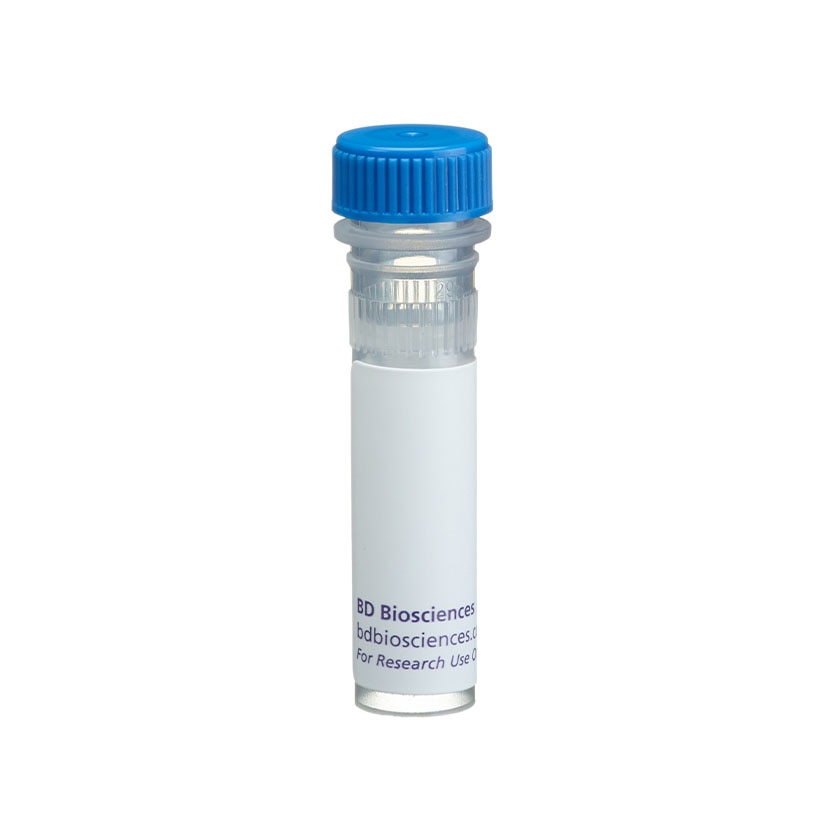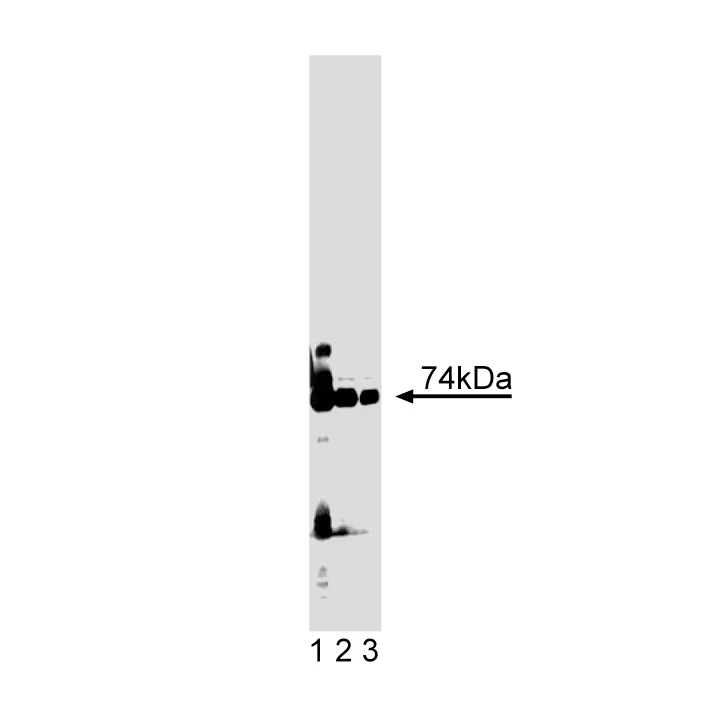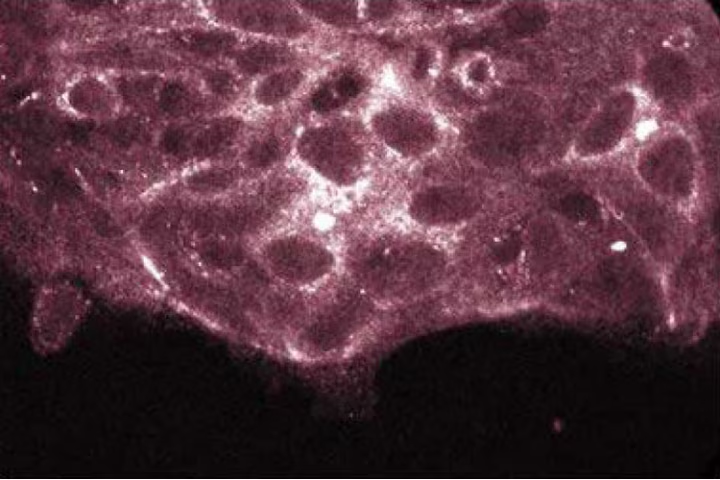 全部商品分类
全部商品分类


1/3

品牌: BD Pharmingen
 下载产品说明书
下载产品说明书 用小程序,查商品更便捷
用小程序,查商品更便捷


 收藏
收藏
 对比
对比 咨询
咨询反应种属:
Rat (QC Testing), Human, Mouse, Dog, Chicken (Tested in Development)
来源宿主:
Mouse IgG1
产品介绍
产品信息
荧光素标记
抗原名称
PKCλ

宿主
Mouse IgG1

免疫原
Human PKCλ aa. 397-558

简单描述
The Protein Kinase C (PKC) family of homologous serine/threonine protein kinases is involved in a number of processes such as growth, differentiation, and cytokine secretion. At least eleven isozymes have been described. These proteins are products of multiple genes and alternative splicing. PKC consists of a single polypeptide chain containing four conserved regions (C) and five variable regions (V). The N-terminal half containing C1, C2, V1, and V2 constitutes the regulatory domain and interacts with the PKC activators Ca2+, phospholipid, diacylglycerol,
or phorbol ester. However, the novel PKC (nPKC) subfamily members ( δ, ε, η, and θ isoforms) and the atypical PKC (aPKC) subfamily members (ζ,
ί
, and λ isoforms) are Ca2+ independent and lack the C2 domain. The aPKC members are unique in that their activity is independent of diacylglycerols and phorbol esters. They also lack one repeat of the cysteine-rich sequences that are conserved in cPKC and nPKC. The C-terminal region of PKC contains the catalytic domain. The PKC pathway represents a major signal transduction system that is activated following ligand-stimulation of transmembrane receptors by hormones, neurotransmitters, and growth factors. PKCλ shows the highest degree of amino acid homology with PKCζ (72%) and
PKCλ
mRNA is expressed in a variety of cells and tissues. The PKCλ protein kinase is capable of autophosphorylation and can be activated by phosphatidylserine, but not by other PKC activators such as diacylglycerols, Ca2+, or phorbol esters.

商品描述
The Protein Kinase C (PKC) family of homologous serine/threonine protein kinases is involved in a number of processes such as growth, differentiation, and cytokine secretion. At least eleven isozymes have been described. These proteins are products of multiple genes and alternative splicing. PKC consists of a single polypeptide chain containing four conserved regions (C) and five variable regions (V). The N-terminal half containing C1, C2, V1, and V2 constitutes the regulatory domain and interacts with the PKC activators Ca2+, phospholipid, diacylglycerol,
or phorbol ester. However, the novel PKC (nPKC) subfamily members ( δ, ε, η, and θ isoforms) and the atypical PKC (aPKC) subfamily members (ζ,
ί
, and λ isoforms) are Ca2+ independent and lack the C2 domain. The aPKC members are unique in that their activity is independent of diacylglycerols and phorbol esters. They also lack one repeat of the cysteine-rich sequences that are conserved in cPKC and nPKC. The C-terminal region of PKC contains the catalytic domain. The PKC pathway represents a major signal transduction system that is activated following ligand-stimulation of transmembrane receptors by hormones, neurotransmitters, and growth factors. PKCλ shows the highest degree of amino acid homology with PKCζ (72%) and
PKCλ
mRNA is expressed in a variety of cells and tissues. The PKCλ protein kinase is capable of autophosphorylation and can be activated by phosphatidylserine, but not by other PKC activators such as diacylglycerols, Ca2+, or phorbol esters.

同种型
Mouse IgG1

克隆号
41/PKCλ

浓度
250 µg/ml

产品详情
Purified
Tissue culture supernatant is purified by either protein A/G or affinity purification methods. Both methods yield antibody in solution that is free of most other soluble proteins, lipids, etc. This format provides pure antibody that is suitable for a number of downstream applications including: secondary labeling for flow cytometry or microscopy, ELISA, Western blot, etc.
应用
实验应用
Western blot (Routinely Tested) Immunofluorescence, Immunohistochemistry, Immunoprecipitation (Tested During Development)

反应种属
Rat (QC Testing), Human, Mouse, Dog, Chicken (Tested in Development)

制备和贮存
存储溶液
Aqueous buffered solution containing BSA, glycerol, and ≤0.09% sodium azide.

保存方式
Aqueous buffered solution containing BSA, glycerol, and ≤0.09% sodium azide.
文献
文献
研发参考(5)
1. Akimoto K, Mizuno K, Osada S. A new member of the third class in the protein kinase C family, PKC lambda, expressed dominantly in an undifferentiated mouse embryonal carcinoma cell line and also in many tissues and cells. J Biol Chem. 1994; 269(17):12677-12683. (Biology).
2. Jain N, Zhang T, Kee WH, Li W, Cao X. Protein kinase C delta associates with and phosphorylates Stat3 in an interleukin-6-dependent manner. J Biol Chem. 1999; 274(34):24392-24400. (Clone-specific: Immunoprecipitation, Western blot).
3. Pauken CM, Capco DG. The expression and stage-specific localization of protein kinase C isotypes during mouse preimplantation development. Dev Biol. 2000; 223(2):411-421. (Clone-specific: Immunofluorescence, Western blot).
4. Trauzold A, Wermann H, Arlt A. CD95 and TRAIL receptor-mediated activation of protein kinase C and NF-kappaB contributes to apoptosis resistance in ductal pancreatic adenocarcinoma cells. Oncogene. 2001; 20(31):4258-4269. (Clone-specific: Western blot).
5. Uberall F, Giselbrecht S, Hellbert K. Conventional PKC-alpha, novel PKC-epsilon and PKC-theta, but not atypical PKC-lambda are MARCKS kinases in intact NIH 3T3 fibroblasts. J Biol Chem. 1997; 272(7):4072-4078. (Clone-specific: In vitro kinase assay).

参考图片
Immunofluorescence staining of HCT-8 cells.
声明 :本官网所有报价均为常温或者蓝冰运输价格,如有产品需要干冰运输,需另外加收干冰运输费。




